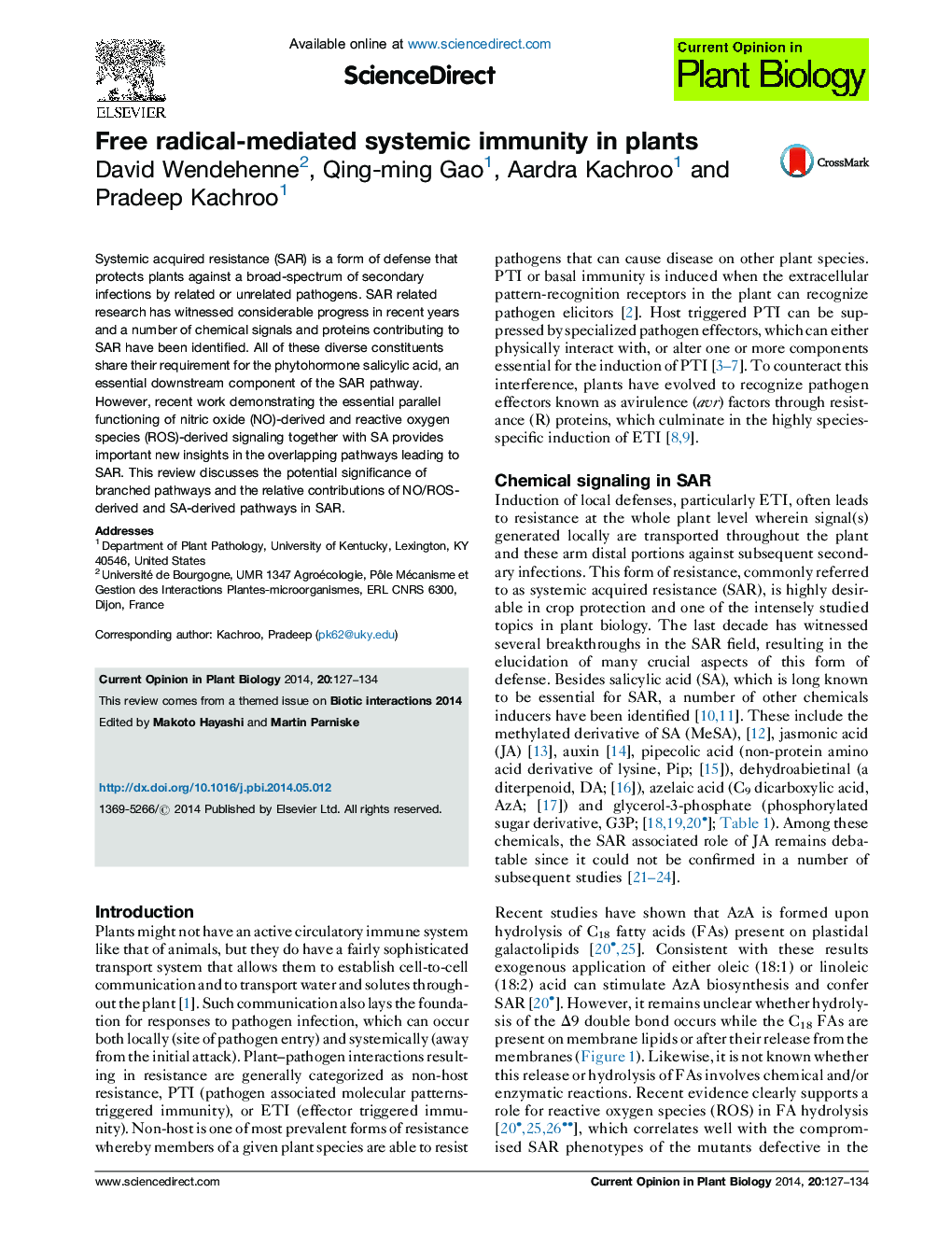| Article ID | Journal | Published Year | Pages | File Type |
|---|---|---|---|---|
| 8382036 | Current Opinion in Plant Biology | 2014 | 8 Pages |
Abstract
Systemic acquired resistance (SAR) is a form of defense that protects plants against a broad-spectrum of secondary infections by related or unrelated pathogens. SAR related research has witnessed considerable progress in recent years and a number of chemical signals and proteins contributing to SAR have been identified. All of these diverse constituents share their requirement for the phytohormone salicylic acid, an essential downstream component of the SAR pathway. However, recent work demonstrating the essential parallel functioning of nitric oxide (NO)-derived and reactive oxygen species (ROS)-derived signaling together with SA provides important new insights in the overlapping pathways leading to SAR. This review discusses the potential significance of branched pathways and the relative contributions of NO/ROS-derived and SA-derived pathways in SAR.
Related Topics
Life Sciences
Agricultural and Biological Sciences
Plant Science
Authors
David Wendehenne, Qing-ming Gao, Aardra Kachroo, Pradeep Kachroo,
